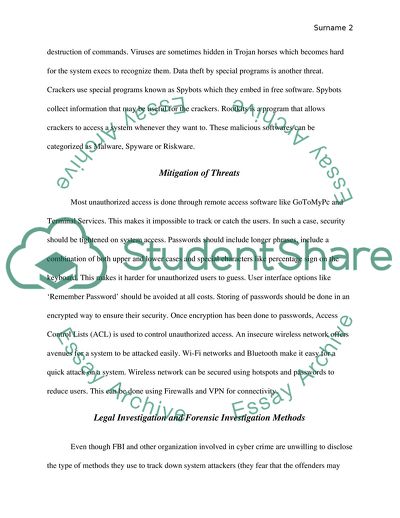Cite this document
(Types and Categories of Threats to IT Systems Essay Example | Topics and Well Written Essays - 1750 words, n.d.)
Types and Categories of Threats to IT Systems Essay Example | Topics and Well Written Essays - 1750 words. https://studentshare.org/information-technology/1810944-mis-and-security
Types and Categories of Threats to IT Systems Essay Example | Topics and Well Written Essays - 1750 words. https://studentshare.org/information-technology/1810944-mis-and-security
(Types and Categories of Threats to IT Systems Essay Example | Topics and Well Written Essays - 1750 Words)
Types and Categories of Threats to IT Systems Essay Example | Topics and Well Written Essays - 1750 Words. https://studentshare.org/information-technology/1810944-mis-and-security.
Types and Categories of Threats to IT Systems Essay Example | Topics and Well Written Essays - 1750 Words. https://studentshare.org/information-technology/1810944-mis-and-security.
“Types and Categories of Threats to IT Systems Essay Example | Topics and Well Written Essays - 1750 Words”. https://studentshare.org/information-technology/1810944-mis-and-security.


